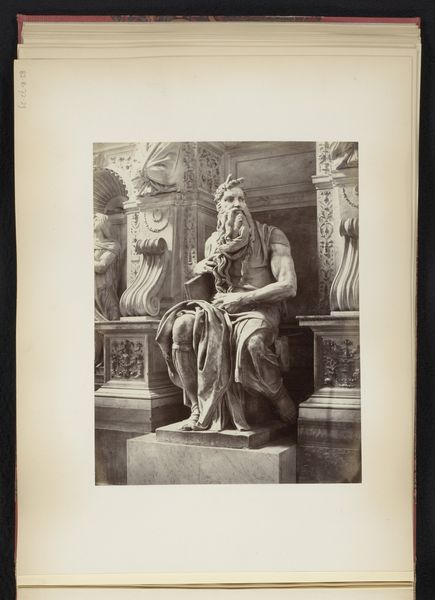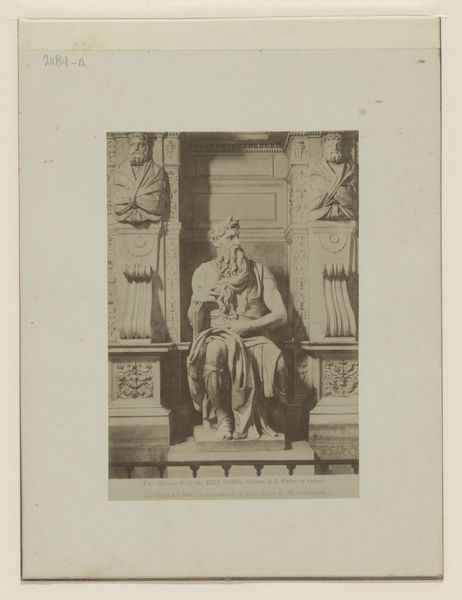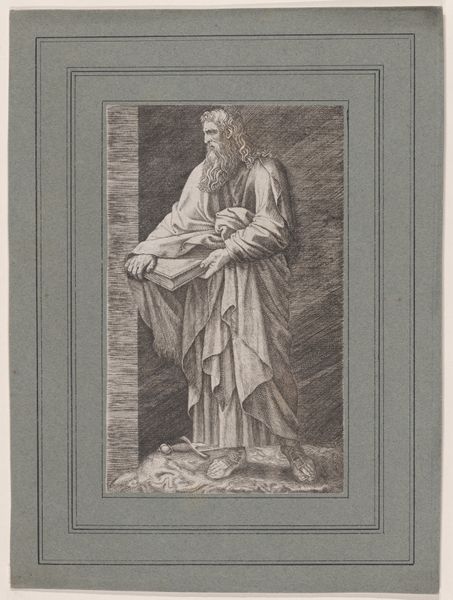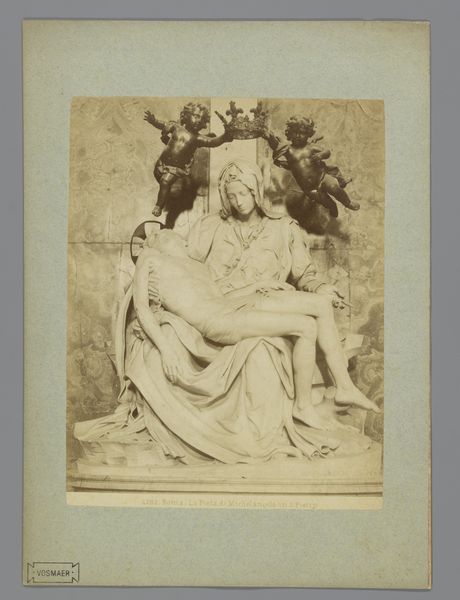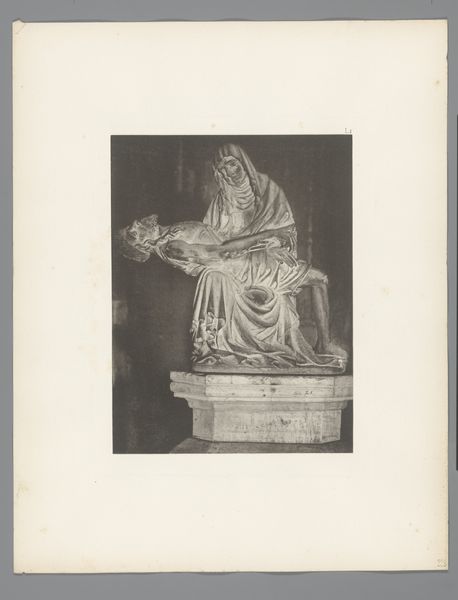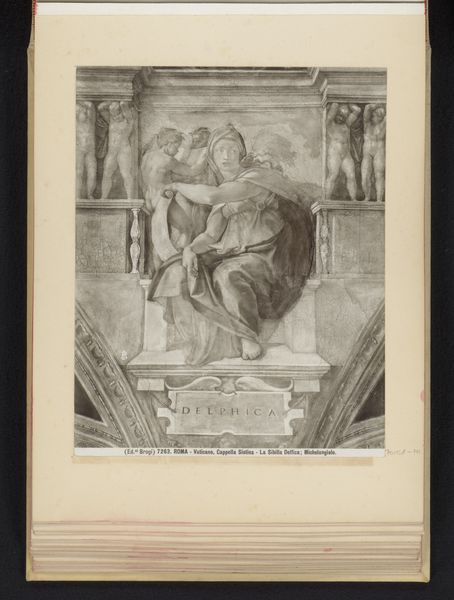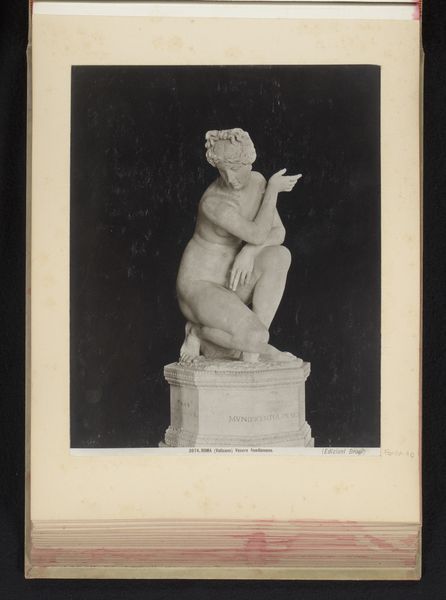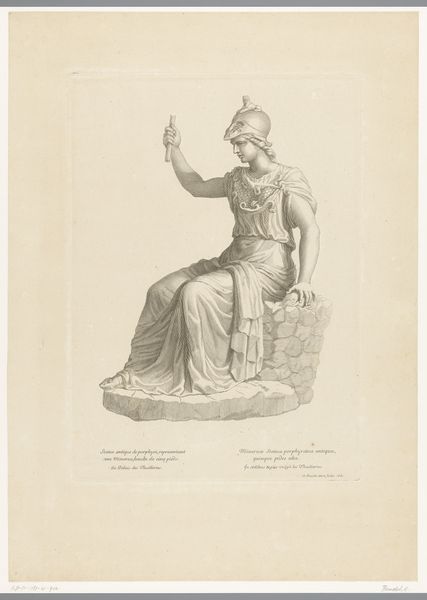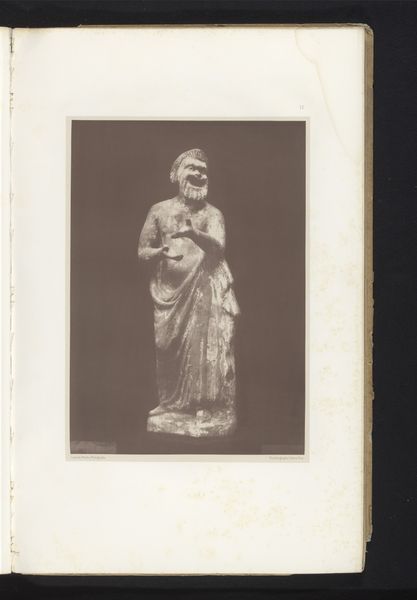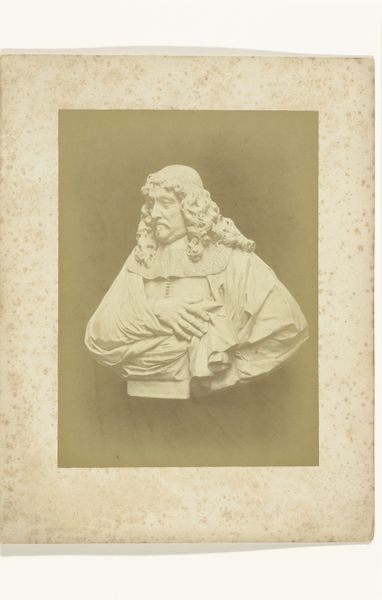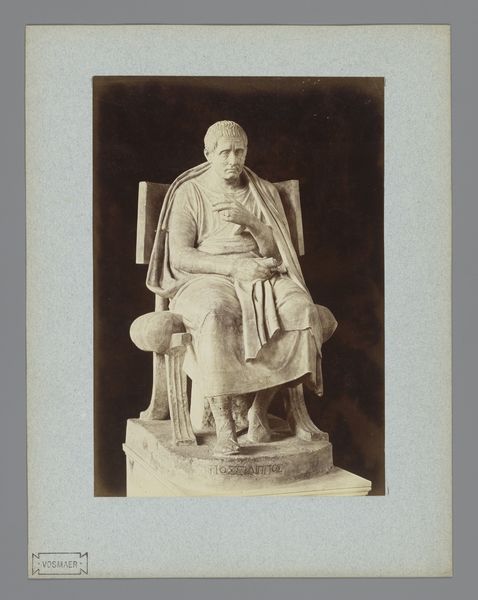
photography, sculpture, gelatin-silver-print, marble
#
portrait
#
11_renaissance
#
photography
#
sculpture
#
gelatin-silver-print
#
marble
#
italian-renaissance
Dimensions: height 250 mm, width 200 mm
Copyright: Rijks Museum: Open Domain
Curator: Looking at this gelatin-silver print from Edizione Brogi, dating to before 1907, we see a photographic reproduction of Michelangelo’s marble sculpture, the Moses, housed in San Pietro in Vincoli. Editor: My immediate reaction is one of sheer power, conveyed so beautifully through the density of the marble itself, the textures the sculptor coaxed from the stone, now captured here by the photographer. Look at the weight of the figure! Curator: Absolutely. The Moses occupies a crucial place in art history, reflecting the patronage system of the Renaissance and its key figures. This was originally commissioned for the tomb of Pope Julius II, and its tumultuous creation reflects the shifting allegiances and ambitions of the time. Consider also its monumental scale, meant to project authority. Editor: Indeed, that tension you describe feels intrinsic to the medium of marble. There is such resistance inherent to the material; stone is slowly coaxed and carved, which creates its own narrative of labor and technical expertise. The photograph then becomes another layer in this process of material transformation. Curator: The politics surrounding the sculpture's creation are just as compelling as the artistic virtuosity on display. The shifting power dynamics in the Church and the role Michelangelo himself played in navigating these treacherous waters adds depth to the piece, resonating even today through pieces like this photo reproduction. Editor: Precisely. Think about how Michelangelo approached the raw block. What tools did he use? What was the quarry like from where the stone was hewn? It grounds the mythology to remember the labor and raw materiality at play. This photograph abstracts us from that reality while paradoxically pointing us to its existence. Curator: It speaks to the evolving function of art – moving beyond simple aesthetic appreciation to becoming active vehicles for engaging with broader socio-political discourses. This sculpture in situ in the basilica would have very likely spoken differently than this image removed. Editor: Considering the ways a sculpture transitions into image through these early photography processes reminds me that these things do not exist in vacuums, either from an aesthetic or manufacturing viewpoint. Everything impacts everything else. Curator: A fruitful discussion indeed, revealing the artwork's impact both within its original socio-political setting and through its photographic retelling in later periods. Editor: An analysis acknowledging how both the artistic creation and photographic translation contribute to its meaning and impact. Thank you.
Comments
No comments
Be the first to comment and join the conversation on the ultimate creative platform.

